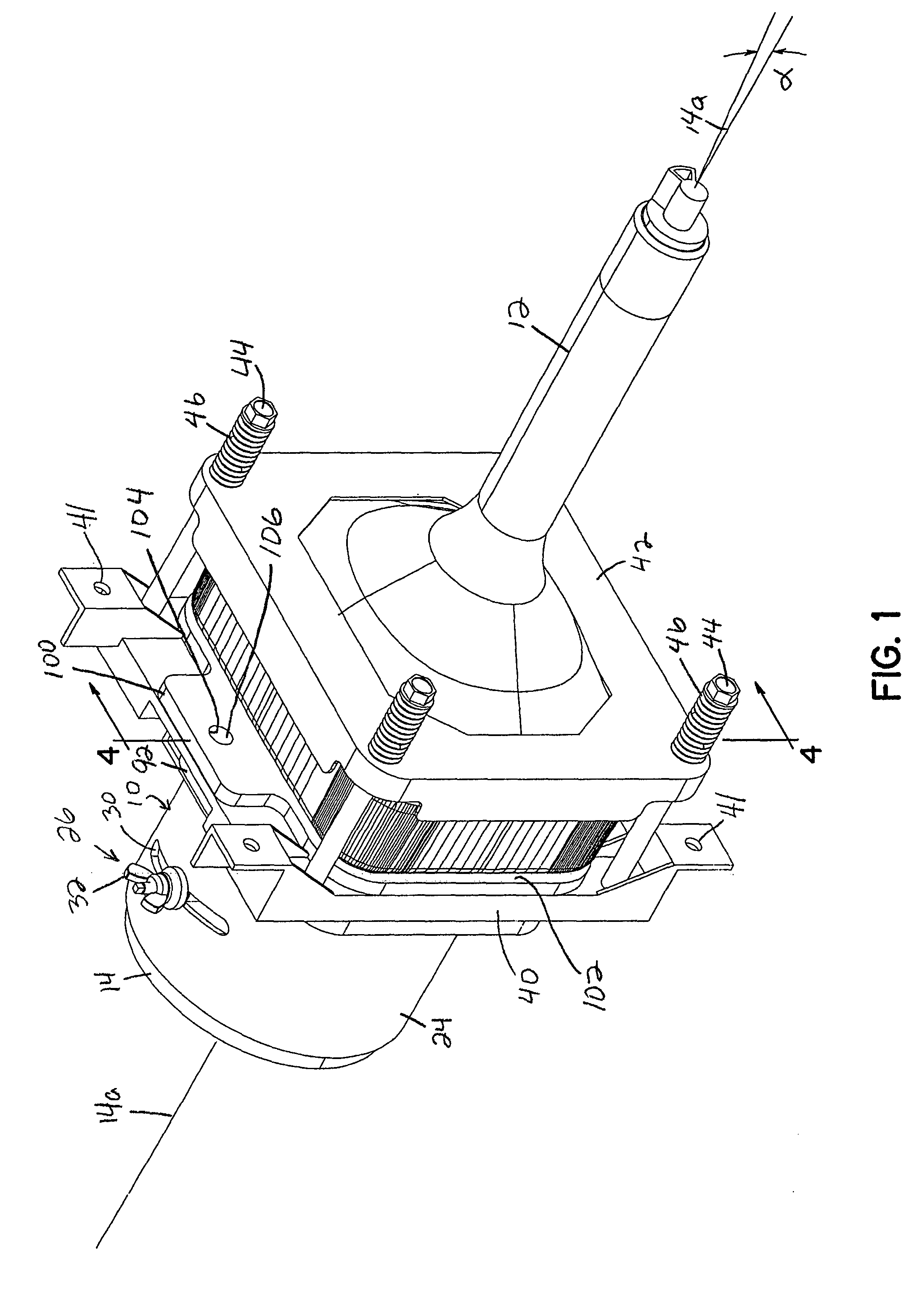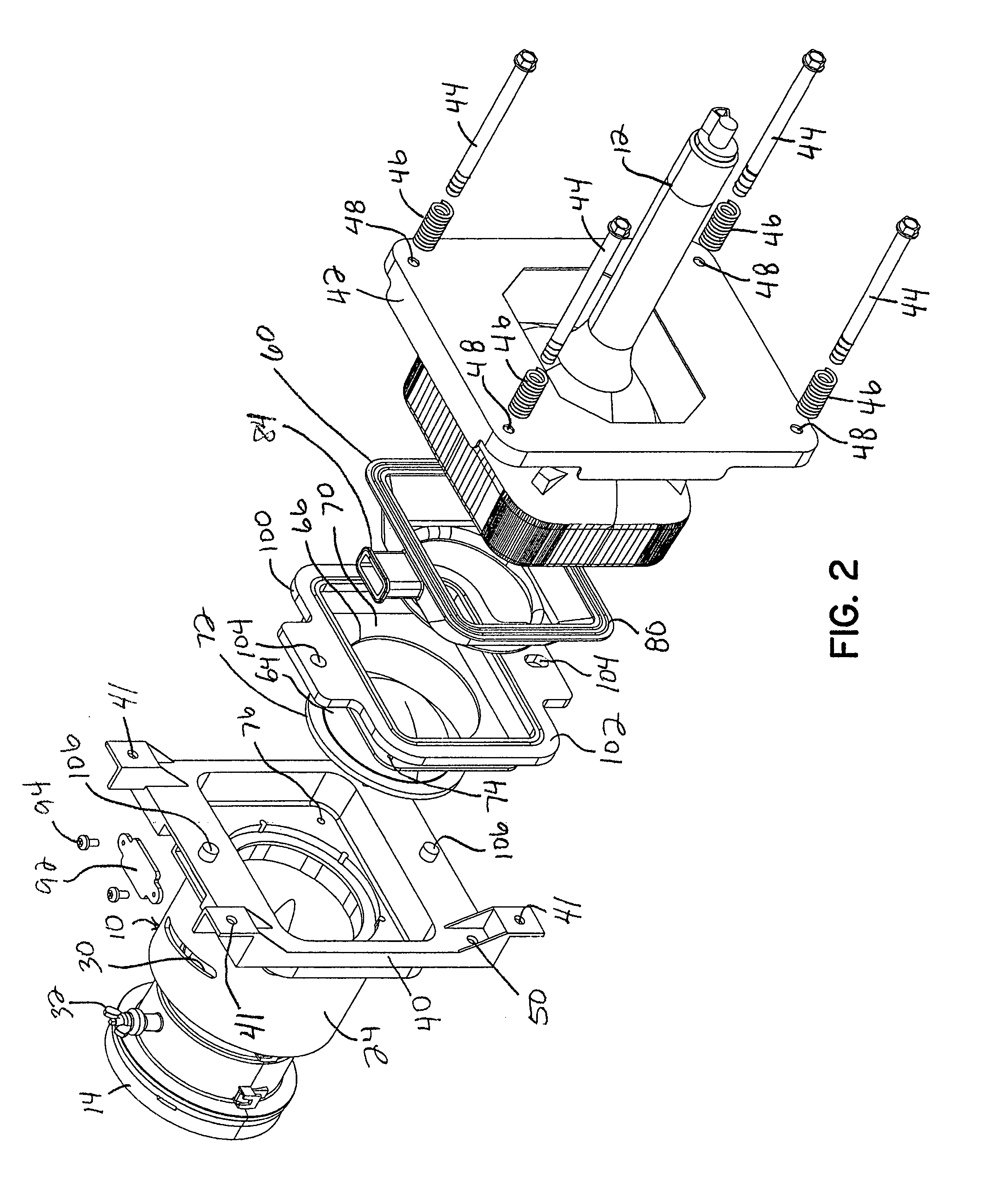Lens assembly with integrated focus mount and CRT coupler
a technology of lens assembly and focus mount, which is applied in the field of lens assembly, can solve the problems of shortened crt life, significant image distortion on the television screen, and undesirable heat on the lens assembly, and achieve the effects of reducing costs and complexity, convenient mechanical methods, and reducing the number of parts
- Summary
- Abstract
- Description
- Claims
- Application Information
AI Technical Summary
Benefits of technology
Problems solved by technology
Method used
Image
Examples
Embodiment Construction
[0030]FIGS. 1-4 illustrate a first embodiment of the invention. Specifically, a lens assembly 10 is connected to a CRT 12 and includes a tubular lens mount 14 having a longitudinal axis 14a and at least a first optical lens element mounted therein along the longitudinal axis 14a. In this embodiment, multiple lens elements 16, 18, 20 are mounted within the tubular lens mount 14 and may comprise separate “A” and “B” lens elements as are conventionally used in projection television lens systems. The tubular lens mount 14 is mounted within a tubular focus mount 24 extending along the same longitudinal axis 14a and adjustable fastening and locking structure 26 connects the lens mount 14 to the focus mount 24 allowing a focus position to be obtained and locked in place between the lens mount 14 and the focus mount 24. This fastening and locking structure 26 may comprise a slot 30 in the focus mount 24 and conventional threaded fastening and clamping elements 32 coupled with the lens mount...
PUM
 Login to View More
Login to View More Abstract
Description
Claims
Application Information
 Login to View More
Login to View More - R&D
- Intellectual Property
- Life Sciences
- Materials
- Tech Scout
- Unparalleled Data Quality
- Higher Quality Content
- 60% Fewer Hallucinations
Browse by: Latest US Patents, China's latest patents, Technical Efficacy Thesaurus, Application Domain, Technology Topic, Popular Technical Reports.
© 2025 PatSnap. All rights reserved.Legal|Privacy policy|Modern Slavery Act Transparency Statement|Sitemap|About US| Contact US: help@patsnap.com



